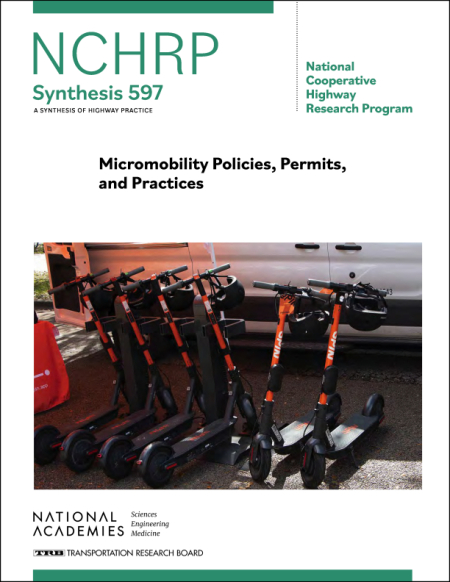Micromobility Policies, Permits, and Practices
The TRB National Cooperative Highway Research Program and National Academy of Science released the synthesis report “Micromobility Policies, Permits, and Practices,” in 2022. The report documents “policies, permits, and practices that state departments of transportation (DOTs) are engaged with in regard to micromobility.” Information was gathered using online surveys of state DOTs, and interviews of three selected DOTs (Minnesota, Maryland, and North Carolina) which were used as case studies. Survey and interview topics focused on the following areas:
- “State definitions of micromobility
- The role DOTs play relative to micromobility, including coordination with municipalities and other local or regional entities
- Approaches to policies and regulations, including permitting, enforcement, monitoring, and emergency management
- Challenges and opportunities that micromobility presents to state DOTs
- A review of major planning, operational, and maintenance issues related to micromobility systems
- Infrastructure design standards and maintenance for micromobility
- Policies and procedures concerning integration and competition between other modes of transportation, such as walking, private cars, transit, taxis, and transportation network companies (TNCs)
- Data collection and privacy issues
- Policies and approaches addressing equitable access and diversity”
The report concludes that most micromobility regulation occurs at the local level, and that state DOTs are more commonly involved in micromobility management activities like developing recommendations, developing standards and guidance, conducting research initiatives, performing data collection, and promoting micromobility.

